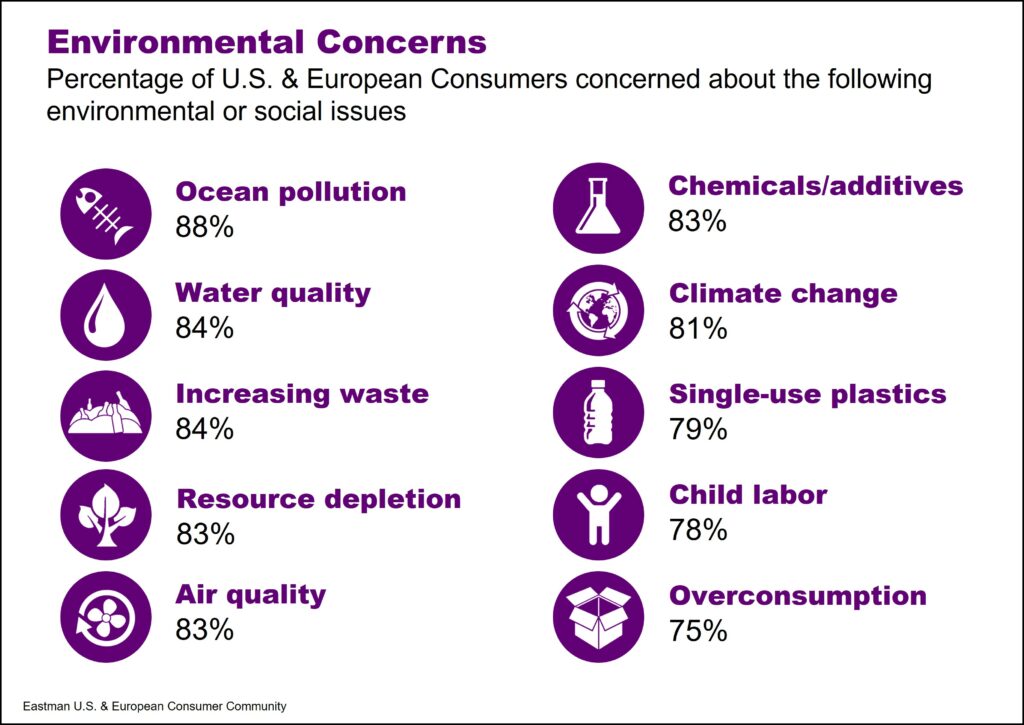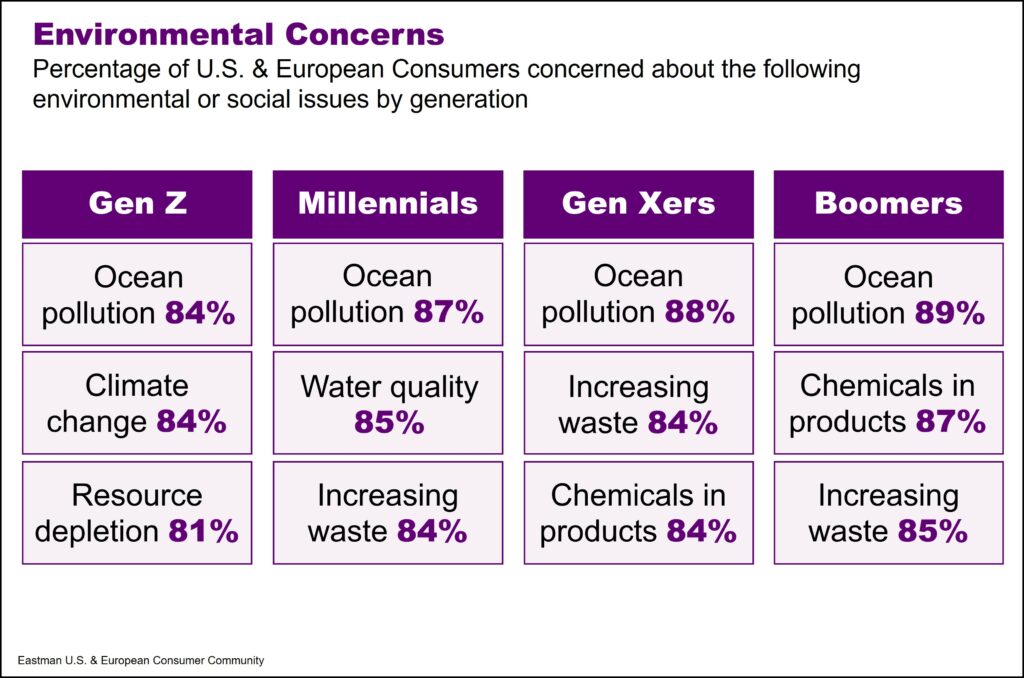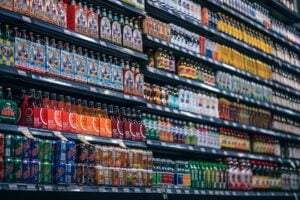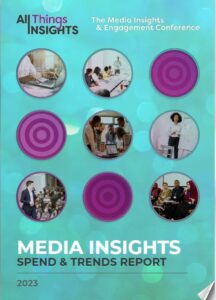Although media and governments around the world are laser focused on climate change, the concept of reducing emissions tends to be far removed from the average consumer to make a dramatic impact on how they may view a company. In fact, 2 in 3 U.S. and European consumers say brands and retailers are not doing enough for the environment, according to Eastman’s U.S. & European Consumer Community. With most major brands and retailers having robust and trackable sustainability goals, there is clearly a disconnect between what brands and retailers are doing and what their customers are seeing and hearing.
As insights professionals, we have an opportunity to help our organizations focus on the environmental issues that most resonate with consumers and communicate goals, initiatives, and new product solutions around those issues in a meaningful way.
Eastman has found that the waste crisis – whether defined as ocean pollution or the increasing amount of waste that has to be landfilled or incinerated – is a top tier environmental concern among U.S. and European consumers. This issue started to grow in importance before the pandemic and now consistently tops the list of environmental concerns among consumers across multiple studies.

In a time when certain environmental issues have become polarized across political affiliation, demographics, and geography, the waste crisis is actually one issue that concerns and unifies consumers across generations. From young Gen Zers looking to make change in the world they are inheriting to Boomers looking to leave a better world for their children and grandchildren, the waste crisis is a leading concern. Tackling the waste crisis and communicating these initiatives presents an opportunity for brands and retailers to better connect with a wide cross-section of consumers.

In fact, the waste crisis isn’t just a concerning issue, it is something consumers are holding brands and retailers responsible for. Nearly 3 in 5 U.S. and European consumers say brands and retailers are responsible for the plastic waste crisis and should be penalized for not taking action to address the crisis – a sentiment driven by younger Gen Z and Millennial consumers.
Solving the waste crisis isn’t just a way to position your company as a sustainable leader, it is something a large portion of consumers expect your company to be doing. Insights professionals can help lead the charge by showing how this issue resonates with your core audiences and what tactics—from incorporating more recycled content into products to eliminating unnecessary packaging—help move the needle on your company’s brand equity and bottom line.
Once your company understands the environmental issues most impactful to your core audiences, the next step will be to determine how those audiences define sustainability. Next month’s post will explore the myth that consumers don’t know what sustainability is. In fact, consumers have a very clear definition across industries, consumer markets, and demographics.
Click here for Justin Coates’ first column in October 2023, “Exploring 10 Myths About Global Consumers & Sustainability.”
Contributor
-

Justin Coates is Eastman’s Head of Global Market Research & Consumer Insights, responsible for leading business intelligence, customer experience, user experience, foresighting, and consumer insights across Eastman. Before joining Eastman in 2017, Coates spent a decade at Cotton Incorporated managing their global consumer insights research and positioning himself as a thought leader on consumer trends with the world’s largest brands and retailers. He holds a Masters of Economics degree from North Carolina State University and a Bachelors of Arts degree in Political Science from High Point University. Coates lives with his wife and son in Kingsport, Tennessee.
View all posts






































































































